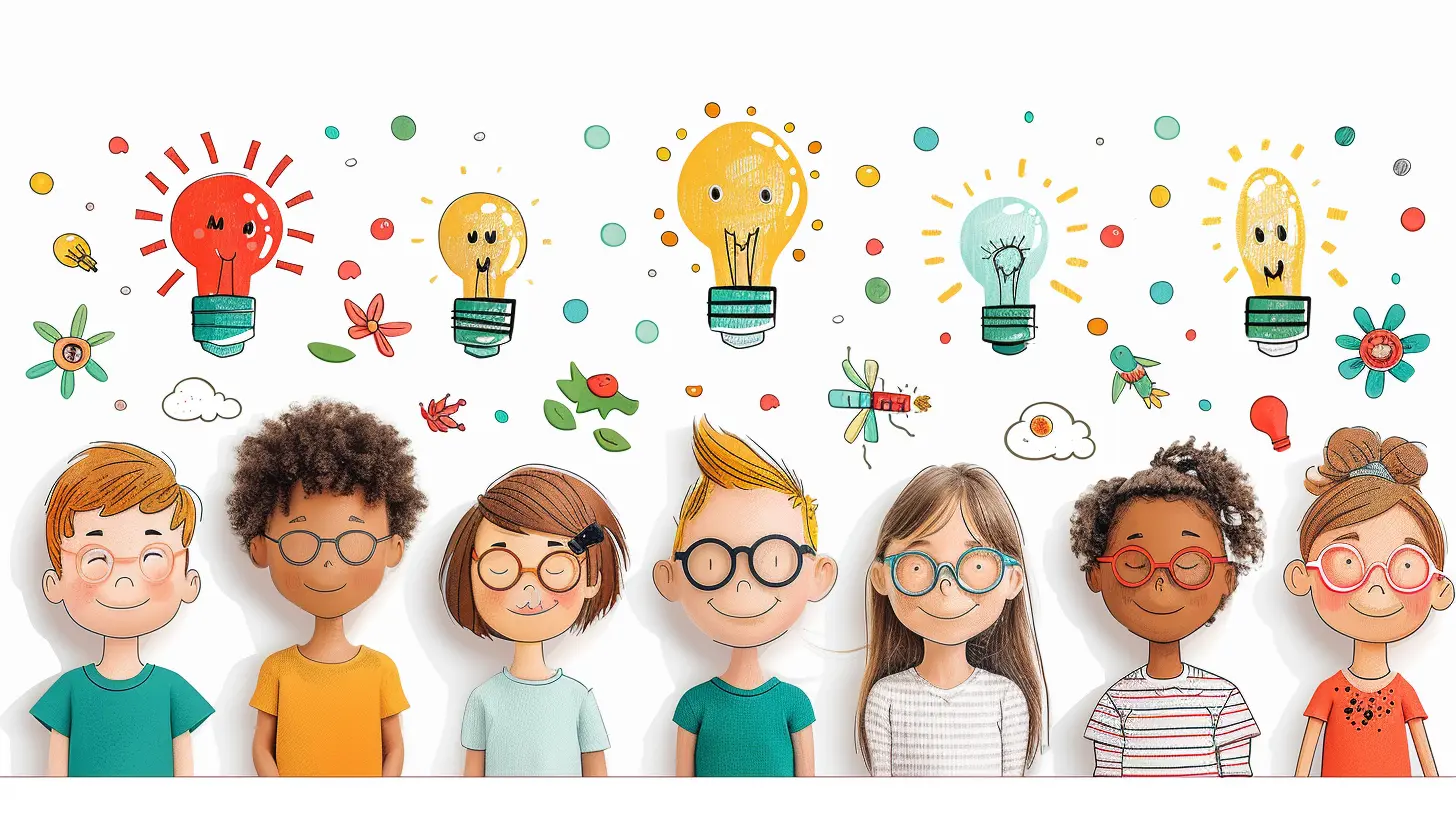Designing Curriculum for Social-Emotional Learning Growth
16 October 2025
Introduction
Imagine a classroom where students not only master math and science but also develop emotional intelligence, resilience, and empathy. Sounds incredible, right? That’s the power of Social-Emotional Learning (SEL).
In today's fast-paced world, academic skills alone are not enough for success. Emotional intelligence and social skills play a massive role in shaping well-rounded, confident individuals. That’s why integrating SEL into the curriculum isn’t just a good idea—it’s a necessity!
So, how do we design a curriculum that fosters social-emotional growth? Let’s break it down step by step.

What is Social-Emotional Learning (SEL)?
Before we dive into curriculum design, let’s get clear on what SEL actually is. Social-Emotional Learning refers to the process through which students:- Understand and manage their emotions
- Set and achieve positive goals
- Show empathy for others
- Build healthy relationships
- Make responsible decisions
In a nutshell, SEL helps students navigate life with confidence and kindness. Now, onto the fun part—creating a curriculum that makes this happen!

Why is SEL Important in Education?
Think about it—how often do we face challenges that require emotional strength and strong communication skills? Every single day! From handling conflicts to working in teams, these skills shape our personal and professional lives.Research shows that schools that incorporate SEL witness:
✔️ Better student behavior – Kids learn to manage stress and resolve conflicts peacefully.
✔️ Improved academic performance – Emotional well-being boosts focus and learning.
✔️ Stronger teacher-student relationships – A positive classroom environment enhances engagement.
✔️ Lower dropout rates – When students feel supported, they’re more likely to stay in school.
Pretty convincing, right? Now, let’s see how to build an SEL curriculum that delivers these benefits.

Key Components of an Effective SEL Curriculum
A strong SEL curriculum focuses on five core competencies:1. Self-Awareness
Students need to recognize their emotions and understand how they impact their thoughts and behavior. This includes:- Identifying emotions
- Recognizing strengths and challenges
- Practicing self-confidence
💡 Activity Idea: Have students keep a “feelings journal” to track their emotions daily.
2. Self-Management
Teaching students to regulate emotions, set goals, and deal with stress is crucial. This includes:- Managing stress and emotions
- Practicing self-discipline
- Setting personal goals
💡 Activity Idea: Introduce deep-breathing exercises or mindfulness moments in class.
3. Social Awareness
Encouraging empathy and understanding helps students navigate social interactions. This includes:- Understanding different perspectives
- Showing kindness and empathy
- Recognizing social cues
💡 Activity Idea: Role-playing activities where students step into someone else’s shoes.
4. Relationship Skills
Building strong and healthy relationships is a lifelong skill. This includes:- Effective communication
- Resolving conflicts
- Teamwork and collaboration
💡 Activity Idea: Group projects where students practice active listening and cooperation.
5. Responsible Decision-Making
Helping students think critically and make positive choices ensures future success. This includes:- Evaluating consequences of actions
- Making ethical decisions
- Taking responsibility for behaviors
💡 Activity Idea: Present real-life ethical dilemmas and discuss solutions as a class.

Steps to Designing an SEL-Focused Curriculum
So, how do we actually build an effective SEL curriculum? Let’s break it down.Step 1: Define Clear SEL Goals
Start by asking: What do we want students to gain from this program? Set measurable goals like:- Improve student self-awareness by 20% in one semester
- Reduce classroom conflicts by 30% through empathy-building exercises
When you have clear targets, shaping the curriculum becomes easier.
Step 2: Integrate SEL into Academic Subjects
SEL doesn’t have to be a separate subject. It works best when woven into daily lessons. For example:- English: Analyze characters’ emotions and motivations.
- Math: Teach perseverance through problem-solving challenges.
- Science: Encourage teamwork in experiments.
The more natural SEL feels, the more students will engage with it.
Step 3: Use Interactive and Engaging Activities
Nobody learns SEL through boring lectures! Keep it engaging with:✅ Storytelling – Reading books that highlight emotions and social challenges
✅ Games & Role-Playing – Acting out scenarios to develop empathy and problem-solving skills
✅ Class Discussions – Providing a safe space to express feelings and opinions
When learning is fun, it sticks.
Step 4: Encourage Reflection and Self-Expression
Give students regular opportunities to reflect on their progress. This can be through:- Personal journals
- Group discussions
- Art projects expressing emotions
Encouraging self-expression helps students internalize SEL lessons.
Step 5: Train Teachers and Parents
SEL works best when students get consistent messages from both teachers and parents. Offer training sessions for educators and workshops for parents to:- Teach emotional coaching techniques
- Model social-emotional skills at home
- Reinforce SEL principles outside of school
A strong support system accelerates SEL growth!
Overcoming Challenges in SEL Curriculum Design
Like any educational program, designing an SEL curriculum comes with challenges. Here’s how to tackle them:🚧 Lack of Time: Integrate SEL into regular lessons rather than separate classes.
🚧 Resistance from Parents or Administrators: Educate stakeholders about the long-term benefits of SEL.
🚧 Monitoring Progress: Use surveys and student reflections to measure impact.
With persistence and creativity, the benefits of a well-designed SEL curriculum far outweigh the challenges.
Measuring the Success of an SEL Program
How do we know if our SEL curriculum is working? Track progress using:📌 Student Self-Assessments – Let students rate their emotional skills before and after the program.
📌 Teacher Observations – Note improvements in student behavior, engagement, and teamwork.
📌 Parent Feedback – Gather insights from parents on emotional growth at home.
📌 Academic Performance – Check if SEL positively impacts focus and grades.
By continuously evaluating and adjusting, we ensure our SEL program remains effective.
Final Thoughts
Designing a curriculum for social-emotional learning isn’t about adding extra workload—it’s about shaping students into emotionally intelligent, compassionate individuals.By integrating SEL into daily lessons, making learning interactive, and involving parents and teachers, schools can create an environment where students not only excel academically but also thrive emotionally.
Because at the end of the day, isn’t emotional intelligence just as important as academic success?
all images in this post were generated using AI tools
Category:
Curriculum DesignAuthor:

Olivia Chapman
Discussion
rate this article
1 comments
Clara Henderson
What a fantastic article! Designing a curriculum that nurtures social-emotional learning is essential for our students' growth. It fosters resilience, empathy, and connection. Let’s celebrate these efforts to create a brighter, more supportive educational environment for everyone! 🌟
October 20, 2025 at 11:54 AM

Olivia Chapman
Thank you for your kind words! I'm glad you found the article valuable—promoting social-emotional learning is indeed crucial for student development. 🌟


